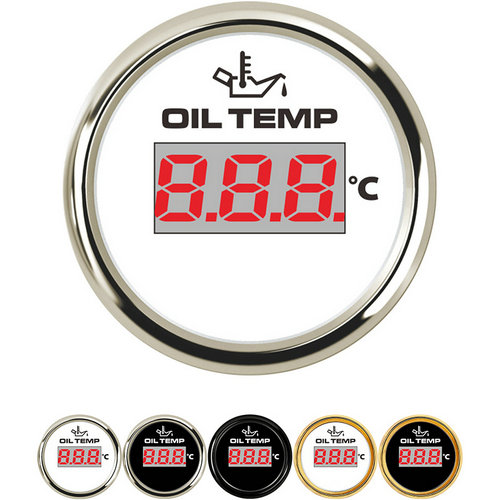banks oil temp gauge sender
Most temperature sensors in automobiles are negative temperature coefficient thermistors, such as the intake air temperature sensor, coolant temperature sensor, and oil temperature sensor of the engine, the oil temperature sensor of automatic transmissions and continuously variable transmissions, the G93 transmission oil temperature sensor responsible for monitoring the oil temperature of the transmission oil pan, the G509 temperature sensor responsible for monitoring the operating oil temperature of the transmission clutch, and the indoor temperature sensor of the air conditioner The ambient temperature sensor, evaporator temperature sensor, suspension air pump temperature sensor, etc. are all negative temperature coefficient thermistors. Its characteristic is that the higher the temperature of the measurement point, the lower the resistance value of the sensor, and the lower the output voltage signal. Taking the Mazda intake air temperature sensor as an example, when the ambient temperatures are - 20 ℃, 20 ℃, and 60 ℃, the resistance values are 13.6 to 18.4k Ω, 2.21 to 2.69 k Ω, and 0.493 to 0.6967 k Ω, respectively.
Common faults of negative temperature coefficient thermistor sensors include abnormal signals, short circuits in the sensor or wiring harness, and false high temperature signals in the data stream; Sensor or harness open circuit, terminal water ingress, or poor ground wire contact can cause false low temperature signals in the data stream. In addition, control unit A/D converter conversion errors may cause spurious high temperature signals in the data stream.Function of the coolant temperature sensor
The coolant temperature sensor terminal is 2-pin, with one input signal line and the other output signal line; If the terminal is 4 pins, the 4 pins are input signal wires, output signal wires, If the terminal is 4 pins, the 4 pins are input signal wires, output signal wires for controlling the injection pulse width, warm-up, ignition advance angle, automatic transmission torque converter lockup, overdrive, and air conditioning. The main functions are: Coolant temperature sensor
① Responsible for controlling the concentration of mixed steam. The lower the temperature, the thicker the mixed steam; The higher the temperature, the thinner the mixture.
② Responsible for controlling the engine speed during warm-up. The speed below 40 ℃ is 1500 r/min, and the speed between 40 and 70 ℃ is 1100 r/min
③ Responsible for controlling the radiator fan, starting to rotate at a low speed above 85 ℃, and starting to rotate at a high speed at 105 ℃.
④ Responsible for controlling automatic transmissions. Torque converters above 56 ℃ are allowed to enter lockup conditions, and transmissions at 70 ℃ are allowed to enter overdrive.
⑤ Be responsible for controlling the air conditioner, and exit the control of the 120 ℃ air conditioner. Fault analysis of coolant temperature sensor:The engine coolant temperature sensor is short-circuited, and the data stream will display a high temperature above 100 ℃, causing the mixture to be too lean to start; The sensor has an open circuit or a poor contact with the ground wire, and the data stream will display a low temperature below - 30 ℃, causing the mixture to be too rich and the exhaust pipe to emit black smoke.
 English
English 



Get a Quote / Info